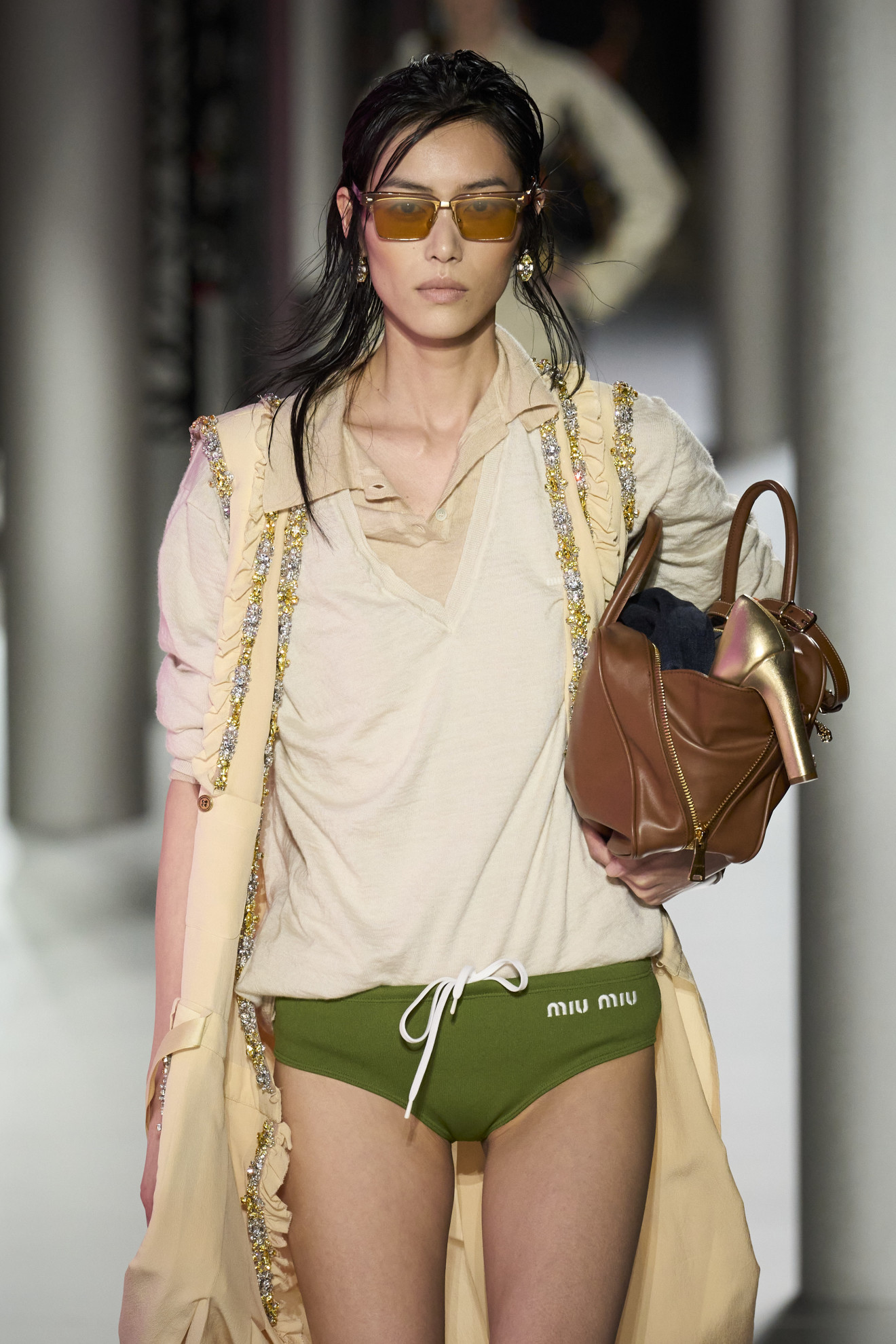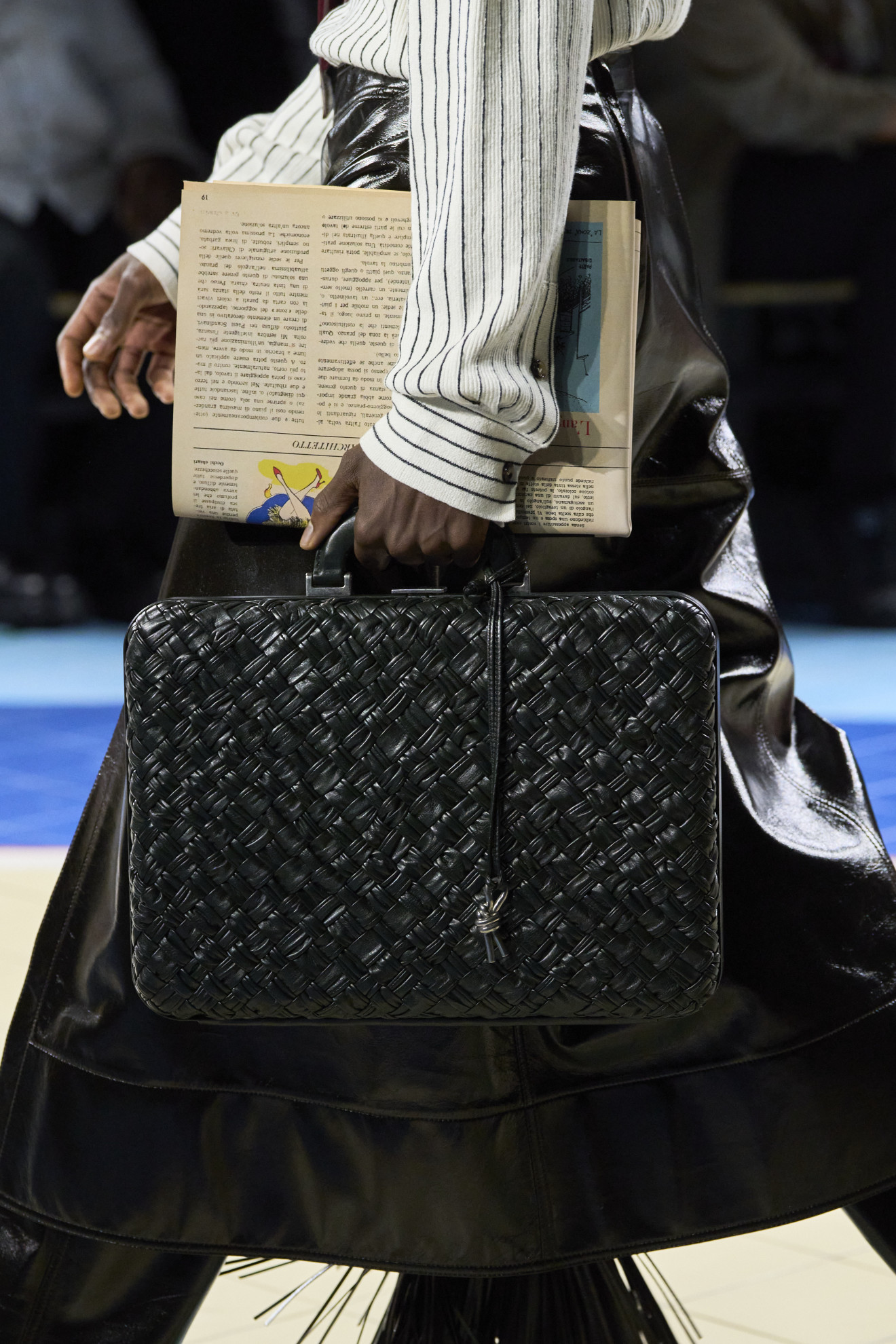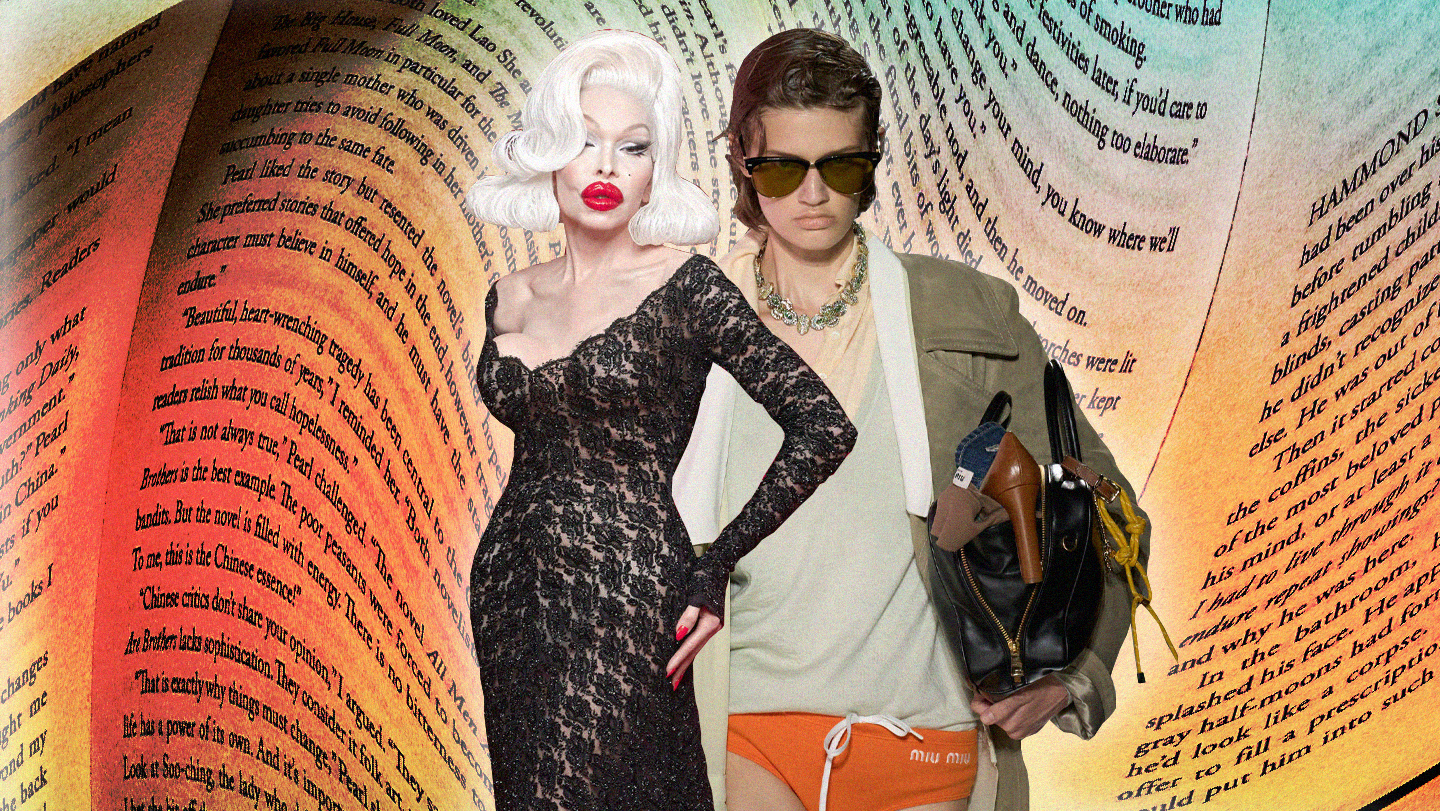Within a season that was dominated by staid wardrobe-focussed collections, those of a “perfect, polished angora world” as Demna said on the overwhelming state of fashion, a few daring designers, including the Balenciaga creative director himself, bucked the trend towards mainstream safeness in favour of shows led by fantastical character-first storytelling. From big houses like The Row and Miu Miu— and of course John Galliano’s Maison Margiela — to emerging designers like ALL-IN, characters were fleshed out in clothes that performed and accessories that propped up these complete and curious worlds. There was suspense and intrigue and spectacle: Where were these people going? Where did they come from? Could we come, too?
Fashion’s penchant for character study is an obsession as old as the shows themselves. At the turn of the 20th century, when display mannequins were retired for human models, fashion plays were all the rage: designers staged theatrical shows in which the leading ladies would bring to life the collections within sparkly imagined worlds. The queen of the sartorial spectacle, British designer Lucile (aka Lady Duff-Gordon), enlisted her famous novelist sister Elinor Glyn to pen a script for each collection—including her 1909 showstopper The Seven Ages of a Woman, which modelled her collection through a single character’s rollercoaster of a life from wean to wife to widow. As these (sometimes 3 hour long) plays were pedalled around to the buying elite of Europe and the US, fashion became a spectacle and its characters, the muse. This was showbiz, baby.

When John Galliano exploded onto the scene in the 1990s with his fantastical shows for Dior, it was within this lineage, fronted by fellow protagonists like Thierry Mugler, Jean Paul Gaultier, and his contemporary Alexander McQueen, that he inserted himself: fashion’s enfants terribles made the craftsmanship of couture, again, synonymous with the spectacle of showmanship. Even without a formal script à la Lucile, Galliano’s complex characters perform his phantasmagoric creations—case in point, his magic SS94 show which followed a fictional Princess Lucretia’s dramatic unshackling from her hooped skirt, crinolined Russian upbringing to a more liberated bias-cut dressed life in Scottish high society. For the duration of his shows, he has said that he wants “people to forget about their electricity bills, their jobs, everything” as fashion, for Galliano, is “fantasy time”. And his latest collection for Margiela was no exception — the way the models clutched their dramatic silhouettes tight, along with their bandied, bolshy gait, made you want to throw down your phone and rush through the portal to whatever world they’d sprung from, too.
At its simplest, and most cynical, these character-studies-turned-shows could be reduced to exercises in commercial escapism — opportunities to sell a glossy dream far from the grind of our sordid reality — after all, who wouldn’t want to pretend to be going to whatever exclusive day spa The Row’s towel-toting models were leaving? But commercial doesn’t quite cut it when it comes to Mrs Prada’s greasy-haired Miu Miu girl — an eclectic character we’ve been following for some collections now — who, this season, trapesed down the runway with fluorescent plastered feet (new summer sandals will blister even the finest of hoofs) and overflowing bags dressed with Jane Birkin-esque trinkets tucked under the arm. Like Galliano, Mrs Prada has made Miu Miu a standard bearer for creativity, dreaming and imagination through her full, fleshy characters that drive home the transformative power of fashion.

More than anything, these perfectly-imperfect sartorial character studies uphold that fashion can be a potent antidote to the staleness of reality. As Demna explained following his Balenciaga show, “I questioned a lot: ‘What does fashion do for us?’… My fashion works from down up, and from up down.” And indeed his clothes were imbued from down up, with colourful personality plucked from his real life. The show’s line-up, armed with train tickets slipped into passports, was cast from his personal circle — including his husband, his mother, prolific style critic Cathy Horyn, nightlife icon Amanda Lepore — to eschew the idea of models as blank canvases and garments as an out-of-touch “proposition to look like they’re rich or successful or powerful”. These human characters and clothes made it his “most personal and my most favourite collection, because it was about me; it was about my story”.
Similarly, Matthieu Blazy’s Bottega Veneta show, which featured models carrying bags stuffed with clothes and newspapers (which, surprise surprise, were actually leather!), pressed the transportive, and transformative, possibilities of fashion through imagination. For Blazy, these character studies embodied the narrative of a journey, noting that “everything you get from a journey transforms you”. “Where people call craft dusty, I think it’s the opposite,” he said, speaking after the show. “It’s a world of possibilities.” And, perhaps, it’s just as simple as Alexander McQueen — who often contorted fashion into twisted, macabre spectacle — once put it: “The world needs fantasy, not reality. We have enough reality today.”


Credits
Images via Spotlight
